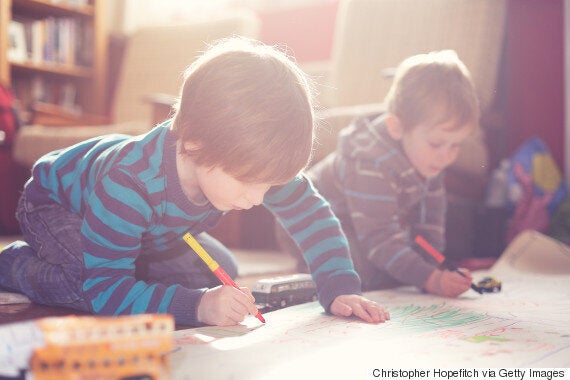Pinning your child’s artwork to the fridge is one of the great joys of early parenthood.
But next time your pint-sized Picasso hands you a painting – or a collage or a spaceship made from modelling clay – take the time to think about the work that went into creating it.

When it comes to your child’s artwork, it can be all too easy to focus on the finished product. But it’s the creative process that paints the real picture – and we’re not just talking about drawing skills and artistic ability. Art activities can help with everything from stimulating the senses and building self-esteem to problem solving and enhancing social skills.
“Exploration of the visual arts is an integral part of young children's learning and is essential for nurturing a child's all-round development,” says Hilary Murtagh, head of the Foundation Stage Unit of Carr Manor Primary School in Leeds.
Murtagh and her team have adopted many of the principles of the progressive teaching philosophy Reggio Emilia, which has creative projects at its core - with a focus on learning through experience and a belief that children must have endless ways to express themselves.
“Offering opportunities to explore and refine artistic skills and encouraging an appreciation of art and aesthetics are at the heart of what we offer. A variety of materials and techniques are introduced and children are encouraged to make independent decisions and choices about what materials they will use and how they will represent their ideas,” says Murtagh.
“They enjoy the sensory nature first and as their physical control over the materials improves they feel an enormous sense of satisfaction and empowerment. As they develop, their compositions begin to include symbols of real events, people and feelings - an essential preparation for mastering writing.”
Sarah Cressall, founder of The Creation Station, a nationwide network of art and craft workshops for babies, toddlers and pre-school children, has also drawn from progressive teaching methods, such as Reggio Emilia, to create a unique approach to children’s art activities.
“One of the many benefits of art is that it can be used to stimulate the senses and spark a child’s natural curiosity,” says Cressall. “It allows each child to create their own journey of exploring ideas and concepts, such as what happens when you mix colours or combine shapes or compare rough and smooth. The child discovers by doing – and that means discovering what doesn’t work (like using sticky tape on a wet painting) as well as what does work.”
In a world where education is increasingly dominated by league table results and academic achievement, art is one of the final frontiers of learning where children can really explore and think for themselves.
“If we only teach our children information, we are failing them,” says Cressall. “We need to equip them with the skills to explore ideas, and to have the confidence to experiment, problem solve and work out their own solutions.”
5 life skills your child will learn through art
Social skills: By sharing materials and collaborating on creative projects, children learn to take it in turns, negotiate and work as a team.
Cognitive development: From early sensory exploration (the feel of a crayon across paper, the smell of paint) and decision making (what to portray, what materials to use) to problem solving (how to get two materials to stick together), art teaches children to think for themselves.
Self-expression: Art is a valuable form of language. A pre-cursor to written and verbal communication, it enables children to tell stories as well as expressing what they are thinking and feeling.
Motor development: The small movements of the fingers, hands and wrists associated with holding a crayon or paintbrush, drawing, painting or manipulating clay develops the fine motor skills of young children while the large arm movements required for painting at an easel or on a large piece of paper on the floor develops large muscle groups.
Inventiveness: When children are encouraged to experiment and take risks by trying new things during the creative process they develop a sense of innovation – a valuable skill in business and in life.
Engaging with the right type of art activities can make all the difference when it comes to the quality and depth of learning. Open-ended process art is the key, according to MaryAnn Kohl, an arts educator and author of numerous books on children’s art education.
"Avoid making models or samples for the children to follow. As soon as we show them how we want something to look, their thoughts change and they begin to copy rather than think," she says. “Process art has no planned product, no sample to copy – it’s more spontaneous and open-ended; it teaches children to think and trust their own imaginations, their own ideas and to solve problems.”
Need some artistic inspiration? Click through the gallery below for some simple, process-art activity ideas from Hilary Murtagh and Sarah Cressall.